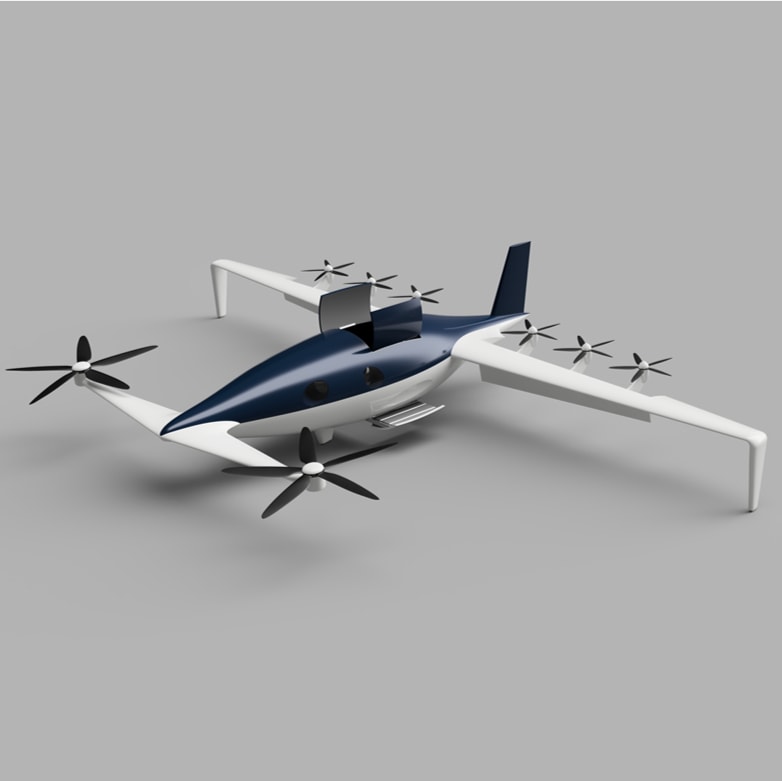


Project Mercurius
The design of the Mercurius Drone focuses on high aerodynamic efficiency combined with minimal weight. A lift-generating body together with slender lifting surfaces, a hybrid fuel cell, and lithium-ion capacitor powered propulsion provide a high lift-over-drag ratio, high specific energy, and high specific power of the overall system. Design features like downward winglets or top-wing props lead to a maximum L/D ratio of over 6 despite low Reynolds numbers, while other concepts (e.g. Amazon) end up with estimated values of 3. The Mercurius hybrid fuel cell propulsion system enables mission ranges that are unattainable for battery-powered concepts. Additionally, it maximizes flight safety and leads to 30% lower costs per package delivered through more efficient utilization.
04
THE NUMBERS
The Mercurius Drone in Numbers
Achieved by combination of fuel cell and lithium-ion capacitor output power.
Achieved at optimal cruise velocity of 130 km/h.
Achieved using 350 bar type IV pressure tank.
Achieved at optimal cruise velocity of 100 km/h.
